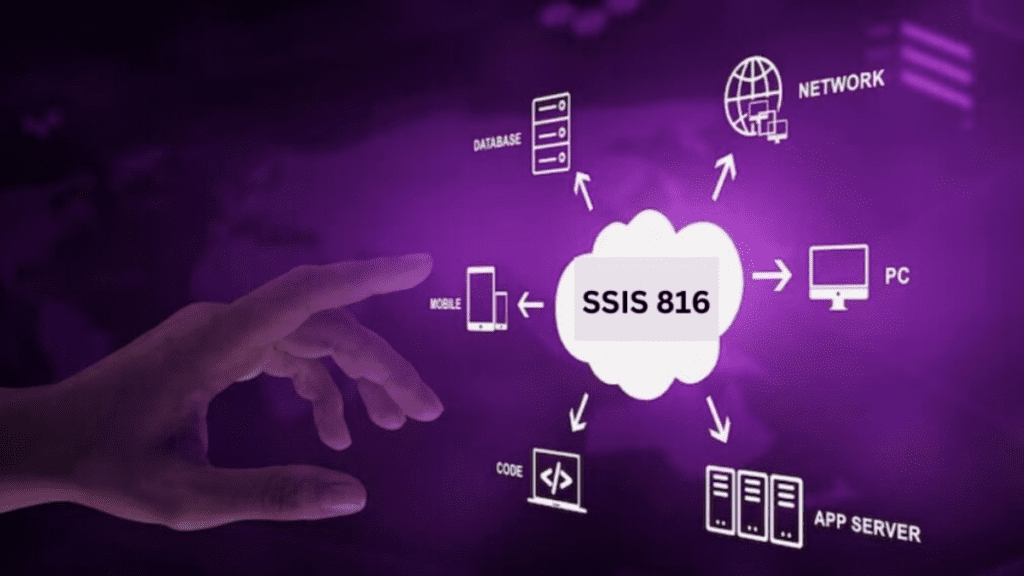Introduction
In today’s fast-paced business landscape, organizations need to efficiently manage and integrate vast amounts of data. This is where SSIS-816, a powerful data integration tool provided by Microsoft, comes into play. SSIS-816, or SQL Server Integration Services, is a versatile and reliable platform that allows businesses to consolidate, transform, and migrate data across various systems, both on-premises and in the cloud. In this article, we will explore the capabilities of SSIS-816, its benefits, and how it can enhance data integration processes.
Understanding SSIS-816
What is SSIS-816?

SSIS-816 is an essential component of Microsoft’s SQL Server suite, dedicated to data integration and transformation. It provides a comprehensive set of tools and services to design, build, and manage ETL (Extract, Transform, Load) processes. With SSIS-816, organizations can establish seamless connections between disparate data sources, ensuring data accuracy and consistency throughout the entire integration pipeline.
Why choose SSIS-816?
- Flexible and Extensible: SSIS-816 offers a wide range of data integration capabilities, allowing developers to address diverse business needs. From simple data transfers to complex transformations, SSIS-816 provides the flexibility required to handle diverse scenarios efficiently.
- Time and Cost Savings: By streamlining data integration workflows, SSIS-816 helps reduce manual data entry and eliminates the need for custom coding or third-party tools. This leads to significant time and cost savings, enabling organizations to allocate resources more effectively.
- Scalability and Performance: SSIS-816 leverages the power of SQL Server’s processing capabilities, ensuring high levels of scalability and performance. It can handle large volumes of data and execute complex operations efficiently, enabling organizations to meet their data integration requirements, even as they grow.
- Robust Error Handling: SSIS-816 provides a robust error handling mechanism, allowing developers to detect and address data quality issues during the integration process. It offers built-in functionalities to validate data, handle exceptions, and log errors, ensuring data integrity and reliability.
- Integration with Ecosystem: SSIS-816 seamlessly integrates with other Microsoft tools and services, such as SQL Server Analysis Services and SQL Server Reporting Services. This integration enables organizations to create end-to-end data solutions, encompassing data integration, analysis, and reporting.
Enhancing Data Integration with SSIS-816
Designing Data Integration Workflows
When using SSIS-816, developers can create data integration workflows through its visual interface, which offers drag-and-drop functionality. This makes it easy to design and configure data flow tasks, control flow tasks, and event handlers. The visual nature of SSIS-816 allows developers to visualize the data integration process, making it easier to identify and resolve any potential issues.
Transforming Data with SSIS-816
SSIS-816 provides a rich set of transformation components to manipulate data during the integration process. From basic operations such as sorting and filtering to advanced transformations like data pivoting and data cleansing, SSIS-816 empowers developers to perform a wide array of operations seamlessly. These transformations help ensure data consistency and improve the quality of integrated data.
Leveraging Advanced Features
While SSIS-816 offers standard data integration capabilities, it also provides advanced features that can enhance the integration process further. For example, developers can leverage the Script Task component to incorporate custom scripts into the integration workflow. This allows for more complex data manipulations or integration scenarios that require custom logic.
Monitoring and Troubleshooting
SSIS-816 offers comprehensive monitoring and troubleshooting capabilities to ensure seamless data integration. Developers can monitor package execution using logging and event handlers, enabling them to track process status, detect errors, and take corrective actions. The integrated debugging functionality allows developers to step through package execution, making it easier to identify and fix issues.
Conclusion
In today’s data-driven world, effective data integration is crucial for organizations seeking to gain valuable insights and make informed decisions. SSIS-816 provides a robust platform for designing, managing, and executing data integration workflows, enabling businesses to consolidate and transform data seamlessly. With its flexibility, scalability, and extensive feature set, SSIS-816 proves to be a reliable choice for businesses of all sizes. By harnessing the power of SSIS-816, organizations can unlock the true potential of their data, driving growth and success in an increasingly competitive landscape.






